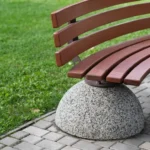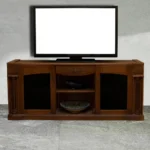Moving can be challenging. Some items are much harder to handle than others. Ever wonder why some things need extra care? This post will explain everything you need to know. Find out how to move tough items safely and easily. This guide covers techniques, tools, and best practices. It will help make your move smoother, even with tricky items.
Why Are Some Items Harder to Move Than Others?
Some items are more challenging to move because of their weight, size, or fragility. Knowing why these items are harder to handle can help you prepare. It also reduces the risk of damage. Bulky furniture, fragile antiques, large electronics, and delicate plants are some examples. These items need special packing and careful handling.
10 Hardest Items to Move
Below is a list of the top ten items movers find most challenging and why. Each item requires different handling techniques, which we’ll break down for you in the sections that follow:
- Pianos
- Large appliances (refrigerators, washing machines)
- Heavy furniture (beds, couches, wardrobes)
- Fragile antiques and artwork
- Large mirrors and glass tables
- Electronics (TVs, computers)
- Exercise equipment (treadmills, weights)
- Plants
- Bicycles and sports equipment
- Heavy boxes of books or records
Preparing Large Appliances
Large appliances like refrigerators, ovens, and washing machines require specific preparation before moving day. Here’s a quick guide:
Defrost and Clean
Ensure that fridges and freezers are defrosted and dried. Remove all food items to prevent spills.
Disconnect and Secure
For washers and dryers, disconnect hoses and secure them inside. A professional should disconnect gas appliances.
Wrap and Protect
Use moving blankets and padding to prevent scratches or dents.
Strategies for Moving Fragile Items
Fragile items, such as china, glassware, and vases, require extra care when packing and moving:
- Use High-Quality Packing Materials: Wrap each item in bubble wrap or foam sheets.
- Double Box for Extra Protection: Place items in small boxes with padding, then place those boxes into a larger box with additional padding.
- Label Clearly: Clearly label each box as “Fragile” and indicate which side should remain upright.
Transporting Heavy Furniture
Heavy furniture can be a nightmare to move without the right tools and strategy:
Disassemble When Possible
If your furniture can be disassembled (like bed frames or sectionals), take it apart to make it easier to move.
Use Furniture Sliders
Place furniture sliders under the legs or corners. Sliders help protect floors from scratches and reduce friction. They allow heavy items to glide smoothly, making them easier to move.
Lift with Proper Technique
Always lift using the right technique. Bend your knees, not your back, to prevent strain. If the item is very heavy, use a moving dolly for support. This helps keep you safe and prevents injuries during the move.
Moving Antiques and Artwork
Antiques and valuable artwork require special attention to prevent damage:
Use Custom Crates for Large Pieces
For extremely valuable pieces, consider having custom crates made.
Temperature and Humidity
Keep in mind that temperature fluctuations can damage antiques. If possible, transport in a climate-controlled environment.
Wrap and Label Carefully
Wrap each piece individually, covering delicate parts like frames and corners with additional padding.
Handling Electronics with Care
Electronics are sensitive to shocks, moisture, and static electricity, making them challenging to move:
Backup Your Data
Before moving computers or hard drives, back up all important data.
Use Original Packaging if Possible
Original packaging provides the best fit and protection. If you don’t have it, use bubble wrap and padded boxes.
Keep Cables and Accessories Organized
Label each cable and pack them together with their respective device to avoid confusion upon arrival.
Safe Techniques for Moving Plants
Plants are living things, and moving them can be stressful for both you and the plant:
- Use Proper Containers: Keep plants in sturdy pots that won’t crack or tip over.
- Moisture and Temperature: Water plants a day before moving, but avoid overwatering. Keep them away from extreme temperatures during transport.
- Pack Carefully: Wrap large plants with breathable material and secure them in a way that prevents tipping.
Packing and Moving Sports Equipment
Sports equipment varies widely, from small weights to large treadmills. Each type has specific packing needs:
Secure Loose Parts
For equipment like bikes and ellipticals, secure any moving parts. Remove attachments to prevent damage during the move. Straps or tape can keep parts from shifting.
Wrap for Protection
Use padding or bubble wrap to protect equipment surfaces. This prevents scratches and dents. Wrap delicate areas, such as screens or handles, with extra layers for added safety.
Lift with Caution
Be careful when lifting heavy items like weights. They can be heavier than they appear. Use a dolly or cart for support when possible. This helps avoid injuries and makes moving easier.
Conclusion: Making Your Move as Easy as Possible
Moving is challenging, especially with items needing special care. By planning, using the right tools, and getting help, you can make it easier. This will protect your valuable items from damage. Be sure to tell your movers about any tricky items. They have the experience and tools to handle them safely.









